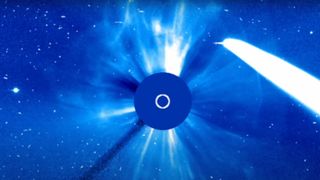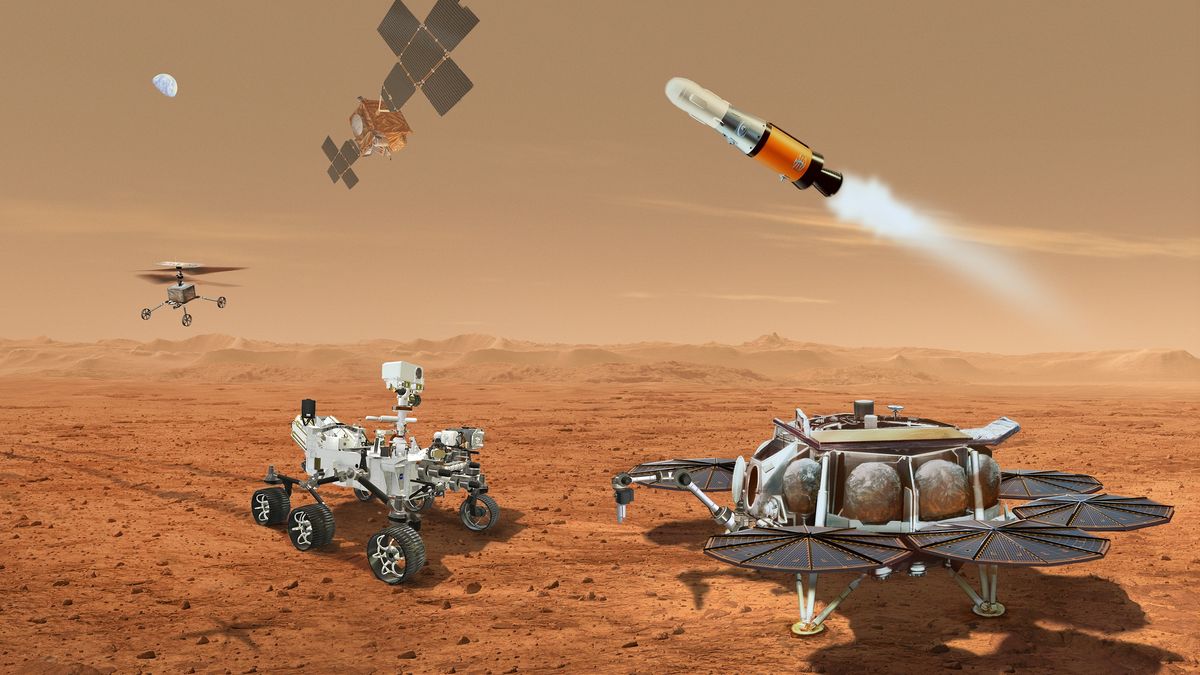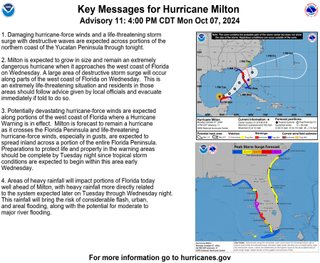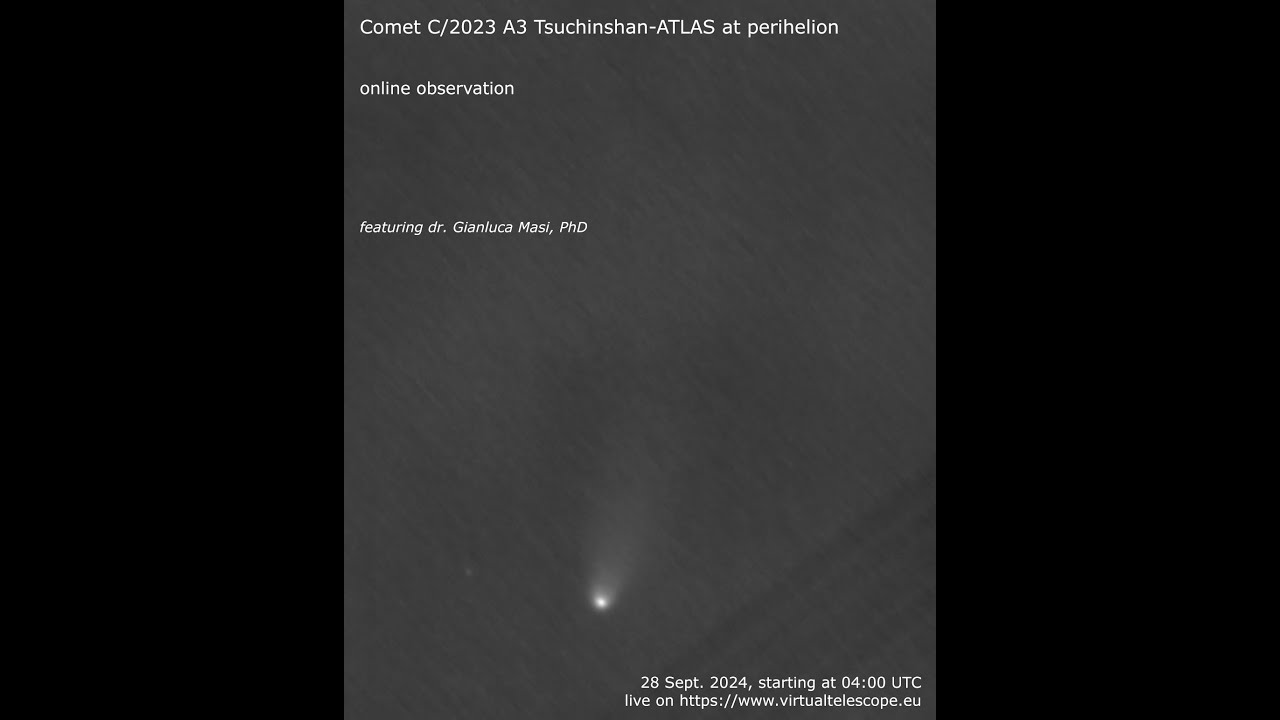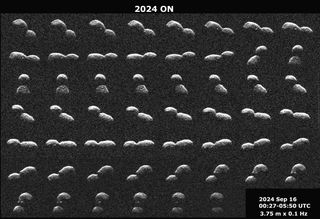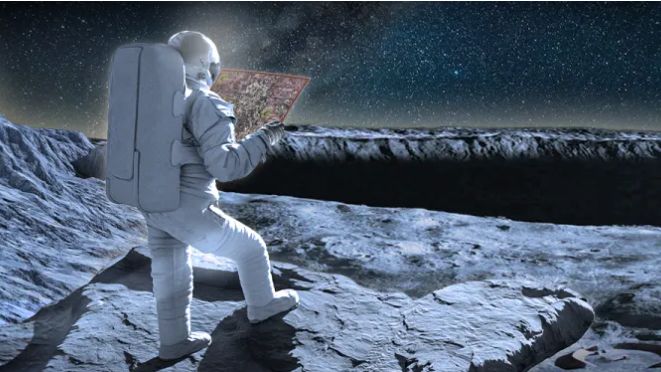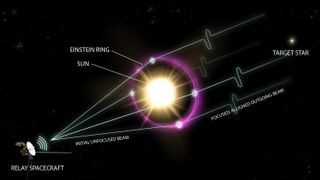Nothing makes a photo more interesting than an unexpected guest appearing in the background. And how cool would it be if the photobomber were a comet? That’s exactly what happened to the sun-studying Solar and Heliospheric Observatory (SOHO) spacecraft, a joint effort of the European Space Agency (ESA) and NASA, beginning on Oct. 7. Typically, scientists use the view from SOHO’s Large Angle Spectrometric Coronagraph (LASCO) instrument to monitor the sun’s activity and determine if a coronal mass ejection (CME) accompanies a solar flare from active sunspot regions. Coronographs block…
Read MoreTag: Solar System
Can Rocket Lab come to NASA’s rescue with new Mars sample-return plan?
NASA’s troubled Mars sample-return program may have a new lifeline, in the form of a proposal from private space company Rocket Lab to help save the mission. When the Perseverance rover landed on Mars in 2021, the plan was to follow up with a mission in the early 2030s that would retrieve the canisters containing samples of Martian dirt, rocks and atmosphere collected by the rover, and bring them to Earth for detailed study. The hope is that the samples will be able to tell researchers about conditions on Mars…
Read MoreSatellite images capture Hurricane Milton intensifying into Category 5 storm (videos)
In the heart of the Gulf of Mexico, a new hurricane is brewing. Hurricane Milton, now having intensified into a Category 5 storm, was caught in incredible space-based imagery from spacecraft such as the U.S. National Oceanic and Atmospheric Administration’s GOES-East satellite. Hurricane Milton comes just ten days after Hurricane Helene, the deadliest hurricane to hit the United States since Katrina, made landfall in the southeastern U.S. Milton poses a solid threat to the regions it will impact, and the National Hurricane Center is urging residents of Florida to take…
Read MoreChina unveils spacesuit for moonwalking astronauts (video)
China has strutted out its moon-landing spacesuit, unveiling its design in a ceremony Saturday (Sept. 28) in southwest China’s Chongqing Municipality. A technician put the spacesuit — which China aims to start using on crewed moon missions by 2030 — through its paces, showcasing various movements and gestures, including climbing the rungs of a ladder. The overall design of the moon-landing suit is inspired by traditional Chinese armor, underscoring the suit’s rugged and resolute appearance. It also features ribbons, which have always been an important element in the design of Chinese…
Read MoreWatch spectacular Comet Tsuchinshan-ATLAS rise during the early hours of Sept. 28 with this free livestream
Comet C/2023 A3 Tsuchinshan-ATLAS at perihelion: online observation â 28 Sept. 2024 – YouTube Watch On Comet C/2023 A3 Tsuchinshan-ATLAS has been making quite a name for itself these past few weeks, providing a dazzling spectacle for early morning risers wishing to catch a glimpse of the “dirty snowball” as it streaks through the predawn sky. On Sept. 27, the comet will reach its perihelion — the closest distance to the sun. At 1:55 p.m. EDT (1755 GMT) the comet will be about 36.4 million miles (58.6 million kilometers) away…
Read MoreRadar images capture snowman-shaped object tumbling past Earth
The universe appears to have sent us an early Christmas present: the large asteroid that tumbled safely past Earth last week was, in fact, two asteroids melded into one object that resembles a snowman. The asteroid, named 2024 ON, zipped past Earth on Sept. 17 at 19,842 mph (31,933 kph), which is roughly 26 times the speed of sound. The space rock is huge — 1150 feet (350 meters) long, about the size of a skyscraper — but it safely floated past Earth at a distance of 620,000 miles (1…
Read MoreX-rays from a nuclear explosion could redirect an asteroid
When asteroids hurtle towards Earth in Hollywood films, astronauts often deploy nuclear warheads against them in order to save humanity. Now, scientists have found this strategy could actually help deflect an incoming cosmic impact — not by blowing an asteroid up with a nuke, but by exploding one more than a mile above its surface to shower it with X-ray radiation. As the catastrophic end of the Age of Dinosaurs about 66 million years ago reveals, cosmic impacts can have disastrous effects for life on Earth. “Asteroids aren’t just history…
Read MoreWhat the 1st analysis of China’s Chang’e 6 lunar far side samples revealed
We finally have a glimpse of the first-ever samples collected from the far side of the moon. The first paper on the samples collected from China’s Chang’e 6 lunar probe reveals that the specimens differ in some ways from those collected from the moon’s near side. Thus, they could provide fresh insights and lead to new theories about the moon and its evolution. China launched its complex, 53-day-long Chang’e 6 lunar far side sample return mission in early May. A lander scooped and drilled for samples inside an area known…
Read MoreNASA invites public to design Artemis moon mission navigation tech
NASA is seeking the public’s help for innovative solutions to help Artemis astronauts navigate in and around the lunar south pole. The Artemis program aims to land humans on the moon for the first time since the Apollo missions managed to achieve the feat over 50 years ago. Astronauts will land near the lunar south pole, where permanently shadowed regions may contain areas of water ice that could be accessed to support future missions to Mars. The Lunar Navigation Challenge, which officially opened on Sept. 4, seeks ideas for a…
Read MoreCould we turn the sun into a gigantic telescope?
We have some incredibly powerful telescopes that have given us spectacular views of the cosmos and allowed us to look back to the early days of the universe. These observatories, such as the James Webb Space Telescope (JWST), are amazing feats of engineering that have required billions of dollars and decades of work. But what if we could access an even better telescope that already exists? This wouldn’t be a typical telescope. It wouldn’t even come with a lens. But it would be by far the most powerful telescope we’d…
Read More